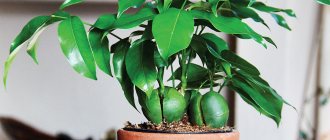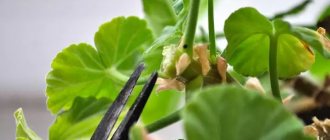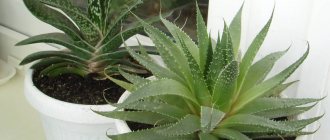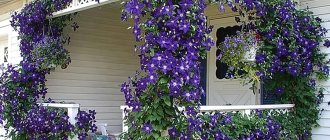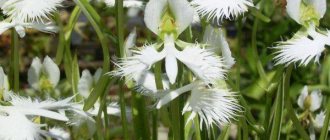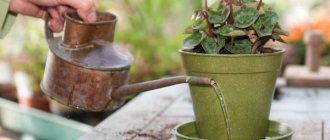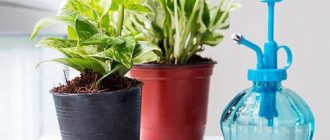For some, the violet is a demanding and capricious lady who does not want to take root in the house, for others this incredibly beautiful flower becomes true love, and often mutual. And achieving the latter result is actually easier than it seems - it’s enough to know how to care for violets at home and constantly adhere to these rules. Let's find out what responsibilities a florist should take on so that the violet always feels great and responds to care with exuberant flowering.
Caring for indoor violets includes several simple activities that even a beginner can do.
What is a shadow
This simple children's question is not so simple when it comes to floriculture. After all, the concepts of “shadow” and “penumbra” are very relative and subjective. For example, the window sill of a north window will already be a shadow for a plant; light-loving specimens will not grow here. If you go further, into the depths of the room, then at a distance of a meter or three meters from the window, the flow of light will differ by a factor of 10, although the human eye practically does not detect this difference.
There is a simple and time-tested technique developed by flower growers. If you, having good eyesight, are able to read newspaper text in this place at noon, then you can place shade-tolerant specimens here. If the newspaper is difficult to read, the place is too dark even for hardy plants. Yes, you can keep a flower pot here, but additional lighting will be required, especially in autumn-winter. And this is a completely different topic for conversation.
Possible diseases
With proper care, violets rarely get sick. But they are still susceptible to the following diseases:
Socket rotting
Occurs due to excessive watering or use of cold water. Also, the growth of the plant can be negatively affected by unsuitable soil or a pot that is too large.
Powdery mildew
The parasite manifests itself as a white coating on the leaves and stems. Appears on flowers that grow in dark, damp rooms.
Late blight
The fungus attacks the root of the flower. Infected soil must be thrown away along with the flower. The pot is then sterilized.
Gray rot
The disease manifests itself as gray mold on leaves and stems. To prevent the development of the disease, violets must be protected from drafts, temperature changes and waterlogging of the soil.
Mites and aphids
They are destroyed with special solutions, which can be purchased at any flower shop.
Fusarium
The plant can also be affected by the dangerous disease fusarium. It cannot be treated. The plant is destroyed along with the soil, and the pot is disinfected with substances containing chlorine. To prevent diseases, violets must be watered with Fitosporin solution once a month. A few drops are enough for one plant.
Features of shade-loving flowers
Many indoor plants grow, develop and bloom well in shaded areas. Partial shade is the ideal location for heliophobic flowers (plants that are afraid of direct sunlight). Only in such places their beauty and grace are fully revealed, the leaves are filled with rich colors, and the flowering becomes abundant.
The ideal location for shade-loving indoor plants is northern and western window sills and windows, shaded corners in the apartment and rooms that receive only diffused natural light.
It is a mistaken belief that shade-loving plants never bloom. On the contrary, such plants can delight gardeners with regular and abundant flowering, while other species can delight gardeners with rich and juicy greenery. But in order for a flower to feel comfortable and fully reveal its grace, it needs to organize the appropriate conditions.
Beautiful indoor flowers
Flowers in the interior of an apartment should not appear as a result of spontaneous purchases. Before purchasing a plant, you need to think about where it will stand and what function it will perform. Most flowers are demanding of light, and this should be taken into account when choosing a location. There are also those that can grow under different conditions, and even in the darkest corners. To better decorate your apartment, you can call a specialist who will select the best flowers for you, taking into account the characteristics of all living spaces.
For kitchen
Potted flowers in the interior of an apartment, including the kitchen, are a highlight, a bright accent, pleasing to the eyes. Different types of plants can coexist in this room, from violets to moisture-loving ferns. The main condition is not to place them next to the stove. Since there are constant temperature changes and high humidity in the kitchen, it is worth choosing those flowers that tolerate these features well. These can be small, compact, heat-loving plants, for example:
- pike tail;
- ornamental fruit plants;
- aloe;
- ivy;
- ficus;
- chlorophytum;
- asparagus.
For the bedroom
In the bedroom you can use outdoor flowers, small potted ones, and various compositions placed on the bedside table or coffee table. If the window sill is wide, large, tall plants will look good; if it is narrow, small, delicate plants will look good. It is not advisable to place a lot of flowers, especially those with a strong aroma. Ferns and lilies that absorb oxygen are not recommended. Ideal flowers for the bedroom:
- Kalanchoe;
- aloe;
- spathiphyllum;
- myrtle;
- violet.
For dark rooms
If there are places in the apartment that are hard to reach for the sun, use shade-loving indoor plants for the interior. They do not suffer due to lack of light; they belong to the decorative deciduous species. Pots can be placed on the floor, hung on the wall, or placed on stands or shelves along the walls. Popular shade-tolerant plants:
- aglaonema;
- aspidistra;
- fern;
- asplenium;
- philodendrons;
- scindapsus.
For the bathroom
Here you can put indoor flowers that love warmth, darkness, and high humidity. It’s great if there is a window, but if there is none, it is recommended to install a fluorescent lamp or phytolamp. Another option is to regularly expose the plants to the sun. In the bathroom you will feel comfortable:
- tropical plants;
- ficus;
- ferns;
- calathea;
- hoya;
- Decembrists;
- chlorophytums;
- aglaonema.
In the living room
When talking about colors in the interior of an apartment, one cannot help but think of the living room. If it is spacious and not overloaded with furniture, place large plants with wide leaves, such as yucca and dracaena. Ampelous, small perennial or climbing, weaving plants will help to visually increase the space. Place light-loving flowers near the window, and shade-loving ones a little further away. The interior will be decorated with hanging baskets, glass vases, and aquarium balls with a variety of plants.
In the hall
Unpretentious plants that get along with a lack of light are suitable. They should have strong leaves that can withstand accidental touches, lush bushes
It is important that the flowers are in heavy (low) pots that are resistant to tipping. Cissus, Hedera ivy, ferns, and ficus grow well in the hallway
Any of these plants must be brought into the light from time to time, otherwise they may wither. Another option is to use artificial flowers in pots for your design.
Fans of the shadow and their talents
Shade-loving crops today can easily be compared in popularity with the most spectacular flowering species and exotics. Unlike the latter, they do not require strict selection of growing conditions and, as a rule, adapt well to conditions in the depths of the room, receiving several times less intense lighting compared to classical indoor crops. Such plants allow you to actively use green accents in the interior.
In complete shade, without access to light, not a single plant, even the hardiest one, will be able to grow. But the requirements for much lower light intensity and the ability to grow crops under artificial lighting with the same success as on window sills allow us to identify a group of truly universal species that can be displayed anywhere you like. If light-loving crops need a light intensity of 10,000 lux, then shade-tolerant crops can tolerate an indicator of 500 to 1000 lux.
You can always measure a specific level of illumination using lux meters or photo exposure meters, but there are simpler methods. It should be taken into account that the maximum allowable distance from windows, even for shade-loving indoor plants, is 2 m from the north and 3 m from window sills of other orientations. Thanks to their ability to adapt to such conditions, shade-loving plants make it possible to decorate study rooms, sleeping corners, bathrooms, other areas and living room relaxation spaces with living plants.
Despite their irreplaceable functionality, versatility and unpretentiousness, shade-loving plants are perceived by many as the most boring group of indoor crops, although they are characterized by the greatest variety of textures. The unique shades of green, which are characteristic of all shade-tolerant herbaceous crops, are manifested even in the fact that a change in location of just a few tens of centimeters can change the intensity of the patterns that appear on the leaves or the shade of color of the leaf blades.
Plants in the back of the room. Arpad Nagy-Bagoly
To landscape the interior and decorate the depths of rooms, you can use shade-loving and shade-tolerant plants. Despite the conditional similarity in terms of the ability to adapt to lower lighting, these plants are not at all the same. Shade-loving plants cannot grow in illuminated locations and naturally prefer secluded lighting. But shade-tolerant crops are real indoor all-rounders that feel equally good in the shade, in partial shade, and in brighter light.
Although even crops with a common origin can exhibit very different light requirements, shade-tolerant plants are most often found among tropical and subtropical plants that are accustomed to making do with minimal light due to the vigorous growth of trees and vines in their native range.
Information is not always provided that plants are able to adapt even to deep shade. A guide can be a reminder that plants feel comfortable on northern windows or can be used for completely artificial lighting. Plants that require a long period of rest in the shade cannot be classified as shade-loving, since at the peak of their decorative value they must be exposed to at least diffused lighting.
Let's take a closer look at some of the best shade-tolerant plants:
Beautiful indoor flowers
Home flowers in the interior should not be the result of impulsive purchases. When planning to purchase them, it is worth thinking through the compositions in advance and taking the choice of copies seriously. In addition, it is worth assessing the compliance of the chosen location with the plant’s habitat conditions and its functional significance.
Most plants will look beautiful only with sufficient lighting, this should be taken into account when purchasing, arrange the flowers so that they receive enough sun or organize additional lighting, which is associated with costs.
For kitchen
Flowerpots in the kitchen interior will allow you to diversify the design and create accents that are pleasing to the eye. Many plants can easily coexist on the windowsill, from the usual violets to exotic ferns.
A feature of the kitchen is temperature changes and high humidity. It is worth selecting plants taking into account these parameters. Such conditions will provide excellent habitat for:
- aloe;
- ficus;
- ivy;
- miniature fruit trees.
When planning your kitchen design, keep in mind that plants should be organized and look neat. They can be placed directly on the table instead of cut ones. Flowers should look healthy and free of pests. Sharp, intoxicating aromas are unacceptable for this room.
For the bedroom
You can use a wide variety of pieces to decorate your bedroom. Plants are easy to place on the floor, window sills, or create a composition on a wall, bedside table, or coffee table.
Since the bedroom is a place for relaxation, where we spend a lot of time, it is worth avoiding species whose representatives are capable of releasing toxic substances. This will lead to constant headaches and malaise. You should not choose flowers with a rich aroma. Also, experts do not recommend using lilies, which actively absorb oxygen, to decorate the bedroom. The ideal option for the bedroom would be:
- spathiphyllum;
- violet;
- myrtle;
- Kalanchoe.
When choosing an option for the bedroom, you do not have to worry about the opinions of guests, since they rarely visit this room. You can create a composition to your taste and enjoy it.
For dark rooms
If the apartment is located on the north side, its windows are covered with tree crowns, choose plants that can easily tolerate shade. Decorative foliage options tolerate darkening perfectly and will decorate a room shrouded in twilight.
It is easy to place such a composition in any convenient place. Can be placed on a windowsill, placed on a wall or on the floor. Experts note shade-loving plants that have become popular:
- philodendron;
- fern;
- scindapsus;
- aglaonema.
When choosing a shade-loving specimen, keep in mind that it can be located on a windowsill if it is not exposed to direct rays of the sun. Depending on the lighting, the green pet can be placed at a distance of 3 to 9 meters from the window. A standard apartment can provide maximum distance from bright light by placing the plant at the end of the hallway or bathroom.
For the bathroom
Taking water treatments surrounded by living plants is doubly pleasant. Specimens that prefer darkness and high humidity will get along well here. If there is no window in the bathroom, you will have to periodically take the plants out into the light and add additional lighting. The following plants will be comfortable in the bathroom:
- tropical species;
- fern;
- ficus;
- chlorophytum.
In the living room
Flowers in the living room will be an excellent solution when it is quite free and not overloaded with various furniture. Having opted for large specimens, such as dracaena, yucca, it is easy to optically further expand the space.
By choosing hanging plants, small perennials, as well as climbing and weaving options for the living room, you can create a comfortable, cozy atmosphere in the room. When arranging the composition, take into account the characteristics of the plants, moving the light-loving ones closer to the light source.
In the hall
Species that are able to develop even with a lack of light will be comfortable here. Plants should have strong leaves, insensitive to constant touching, lush bushes
It is important that the pots in which the flowers are placed are low and heavy, resistant to tipping over
Ficus, fern, Hederes ivy, and cissus will be luxurious decorations for the hallway. However, even such shade-tolerant plants need to be periodically moved to a sunny place. Otherwise, they will lose their decorative effect and die. An alternative option is to use artificial greenery.
Perennial shade-loving plants
Shade-loving perennial garden plants are especially popular because they delight owners with their beauty every year.
Low growing flowering
- Mimilus or "lipstick". Low bushes from 10 to 30 cm love moisture. Flowers of different shades including yellow are like sponges, hence the name. Types of lipsticks: primrose, spotted, Burnetta. Planted in spring by dividing the bush or by seeds.
- Saxifraga. The Saxifraga family has up to 370 species. It grows mainly in rocky areas, hence the name. The bushes are very low, from 5 to 20 cm. The small leaves are above the surface of the ground, and the star-shaped flowers carefully cover them.
- Styloforum bifolia. The height of the bush reaches 40 cm. The shade-loving plant lives only 5 years, therefore, in order to enjoy its rich yellow flowers and glossy leaves longer, it is necessary to renew the bush with new seedlings every 5 years. Seedlings are obtained from seeds; this plant cannot be propagated in any other way.
Low-growing deciduous
- Peltiphyllum thyroid. It loves moisture and shade, so it is often found along rivers. The length of the stems reaches only 50 cm. Huge thirty-centimeter leaves in a heap create the feeling of a green carpet. There are even small pinkish flowers in the inflorescence, which stop blooming when the leaves appear. Propagated at the end of summer by dividing the bush, cuttings and seeds. When planting, 3 seedlings per 1 square meter are enough. m.
- Woodruff fragrant. Regardless of its low size, the bush forms dense thickets. The leaves are lanceolate, light green in color, the flowers are small white in a thyroid inflorescence. Reproduction occurs by dividing the bush or by seeds, sometimes self-propagation occurs.
Tall flowering
- Aconite (fighter grass, buttercup, wolfsbane). The bush can reach a meter. Flowers are collected in inflorescences on a long peduncle. Depending on the variety, they can be yellow, blue, or white.
- Astilbe. The tall creature can reach 8 meters. The whole plant is colorful: the leaves are dark green or reddish, the flowers in bunched inflorescences are pink, white, red, purple.
Tall deciduous
- Hosta. The plant belongs to the lily family and cannot really be considered tall, because the height of the bushes ranges from 20 cm to 90 cm. Huge ellipse-shaped leaves are richly green, sometimes with a white frame or stripes along the leaf. The flowers are barely noticeable and have a racemose inflorescence. Types of hosta: small, swollen, lanceolate, wavy, white-edged, curly, Fortune, Siebold. All varieties reproduce in the spring by dividing the bush, seeds, and buds.
- Heuchera. Popular because of its wide leaves with a variety of colors. Depending on the variety, their color can be green, burgundy, brown, gray. Propagated by root division and seeds.
Frost-resistant
- Shade-loving garden flowers resistant to frost in their diversity include the following species popular in our regions: Siberian aster, arctic lupine, grandiflora capitol, and also: Helleborus (helleborus). Large 8-centimeter lantern-shaped flowers appear even in the presence of snow. The peduncle forms three flowers at once. The color depends on the variety. Transplanting such gifts is difficult due to the dense root.
- Lily of Pennsylvania. Large orange-red flowers tolerate cold well and will delight you all summer.
Treatment
To cope with powdery mildew, the plant is sprayed with a solution of Fundazol or Bentlan. If the lesion is severe, then the procedure is repeated after 10 days. A plant affected by late blight cannot be cured. Therefore, to prevent its occurrence, it is necessary to regularly add superphosphate to the soil and monitor the humidity in the room. An increased level of the latter leads to flower disease.
When gray rot appears, the affected leaves must be removed and the plant itself treated with a fungicide. Small brown spots on the foliage will indicate a mite infestation. They feed on the sap of the plant, so the violet begins to wither.
The plant is treated with acaricides. Additionally, the ground is watered with Fitoverm or Aktellik. The procedure should be carried out outdoors, as these substances are dangerous to humans. You need to wear a mask and goggles on your face, and gloves on your hands. The same method is used to get rid of aphids.
Decorative foliage plants
The decorative effect of representatives of this group consists of elegant variegated leaves, the beauty of which is most clearly manifested in slight shading.
•Dieffenbachia, developing, exposes the trunk. To stop the process and form a lush crown, cut off the crown. Direct rays of the sun discolor the foliage.
•Sansevieria: an original stemless flower with long pointed leaves, designers actively use it for interior decoration. Dark green monochrome, gold-trimmed or variegated varieties look elegant in any setting.
•Alocasia grows slowly. The dark green leaves with light veins have an unusual shield-shaped or heart-shaped shape, which is why the flower is called “elephant ears”.
• Cordyline is a well-leafed plant when young, but quickly loses its foliage over the years. Over time, the trunk thickens, and the tree begins to resemble a palm tree with a lush rosette of leaves on the top. Depending on the variety, cordyline leaf blades can be green, scarlet, purple, burgundy and striped.
•Aspidistra is distinguished by the absence of a stem. The flower is often called the Friendly Family, because over time the bush grows in width, forming a wide rosette of bright green long leaves. The hardy plant can develop well in places with a polluted atmosphere.
Variegated species require more light. Due to lack of lighting, the leaf plates darken and become monochrome.
Indoor large sizes. Palm trees
You can diversify your interior or add a touch of exoticism to your home atmosphere with the help of decorative palm trees or large trees. However, in most cases this is a costly affair and requires painstaking work to create special climatic conditions for the germination of exotic plants at home. Large-sized and indoor palms do not tolerate frequent transplants and drafts. For those who do not have the time to look after and provide proper care for such plants, it is recommended to purchase unpretentious varieties. There are several of the most popular types.
Hamedorea
The plant takes root in any home climatic conditions, does not require excess light and other factors, since it can grow in the proposed conditions.
Advantages:
- no need to think about transplantation, it is necessary no more than once every 1-1.5 years.
Flaw:
- In order for the palm tree to gain growth, intensive watering is required at a certain growth phase.
Howea Forster
Externally, it has larger leaves and stems than chamedoria.
Advantages:
- unpretentious;
- can withstand drought.
Flaw:
- if growth is needed, then the howea must be irrigated and fed constantly.
Dangerous house flowers
Some types of flowers can release toxic substances to pets and can also be dangerous to people. Despite the warnings, many people safely keep such plants at home.
- Philodendron (dangerous for cats; if an adult or child eats a piece of the plant, minor side effects will occur);
- Syngonium (causes vomiting in humans and animals if a piece is eaten);
- Spathiphyllum (the most dangerous type of flower, if it gets into the stomach it causes serious consequences);
- Dieffenbachia (causes mild symptoms of poisoning).
Climbing shade-loving plants
Climbing flowers or vines are sometimes used to decorate the walls and give the room personality. The advantage of these plants is their foliage - it is rich and bright. Some types of climbing plants bloom regularly, but they require proper care to do so.
Tradescantia
A common climbing flower. Tradescantia can be “let” along the wall, or you can form it into a “green cap” and plant it in a flowerpot.
There are several types of Tradescantia, most of them do not like bright light and grow more actively if located in partial shade.
Lianas
There is a sign that growing vines in the house threatens the family with troubles. For those who do not believe in superstitions, the vine becomes a real source of pride, beauty and grace.
Features of shade-loving plants
The main feature of decorative flowers that love shade in an apartment is that they lose their decorative effect when they are in direct sunlight. They should spend at least half of the daylight hours in partial shade or shade. Otherwise, the color of the leaf blades fades, growth and development slow down, and burns from direct rays of the sun may occur.
Shade-loving houseplants may begin to dry out when exposed to sunlight, as there is less moisture in the air and soil.
Dracaena: light-loving or shade-tolerant
This tree-like plant is distinguished by the contrasting coloring of its long and narrow leaves. Depending on the variety, dracaena can grow from 70 centimeters to three meters. To preserve all decorative characteristics, the plant should be provided with partial shade or diffused light. Dracaena also needs regular hydration.
Ficus: light-loving or shade-loving plant
This plant from the Mulberry family, popular among gardeners, can have large or small foliage. At the same time, varieties with green mass of a dark shade can be placed in the shade, but variegated ficuses need a lot of sunlight. At the same time, any type of plant needs protection from soil hypothermia and drafts.
Violets: light-loving or shade-loving
Direct sun is the main enemy of violets. These delicate flowers require diffused light to develop, otherwise the leaves may fade, flowering will stop, and burns will appear.
Indoor violets
Also, violets do not like heat - it is for this reason that they should be placed at a distance of about three meters from the window. At the same time, in winter, you can briefly move the plant closer to the light, for example, put it on the windowsill for an hour or two.
Kalanchoe: light-loving or shade-loving
Those gardeners who prefer flowering crops, but do not want to spend a lot of time caring for them, should pay attention to Kalanchoe. This indoor flower feels great in the shade
It can go for a whole month without watering - however, this has a negative effect on flowering. On warm, fine days, you can place the Kalanchoe on the windowsill, remembering to shade it from direct sunlight.
Indoor flowers, which love shade and are easy to care for, can find a place for themselves in any part of the house, even in a dark hallway where there are no windows at all. They will delight their owner all year round, and this despite the fact that there may be no sunlight. All that remains is to choose which plant is needed in the house.
Choose a substrate with the optimal composition
The violet must be planted in special soil intended for Saintpaulias. As a last resort, you can use a universal soil mixture. Ordinary garden soil is contraindicated for the crop, because pests can live in it, and violets are very sensitive to them.
Smart Clothing: Ingenious Tricks to Save Significant Time
Mysterious Venedict Day: what not to do on March 27 (remove mirrors)
An investigation by Samara local historians confirms: “Zoya’s Standing” is a legend
How to choose a plant
To buy a flower that is necessary for specific living conditions, you should adhere to certain points.
What to look for when choosing:
remember that if unpretentious plants are the object of choice, they should still be cared for, even minimally; You should only purchase plants in special stores; the consultant will give a full description and tell you how to care for the flower; clearly understand where you want to place the flower pot; When purchasing, pay attention to the general condition of the plant; it should be rich in color, without dry leaves or signs of disease; The soil condition should not be dry or too wet.
Safety for plants
All types of houseplants are prone to disease or pest damage. Some to a greater extent, some to a lesser extent.
It is necessary to carry out preventive measures:
- You should carefully examine the leaves of the flower from the outside and inside. This must be done upon purchase, and also inspect the plants in the apartment once a week.
- When planting, the container for the plant and bud must be heated or frozen, depending on the selected species.
- You need to know how to create a microclimate for flowers that are at risk.
If parasites are detected:
- Immediately isolate the plant from others, as pests spread very quickly;
- Collect pests by hand or rinse with a strong stream of water (repeat several times in a row);
- Wipe the leaves with a stiff brush dipped in soapy water.
- To combat persistent pests, use a soft cloth to wipe the leaves with a solution of alcohol or denatured alcohol;
- You can wipe the leaves with a decoction of garlic, hot pepper or onion for a month;
- It is not recommended to carry out chemical-based treatment at home, however, if there are a large number of pests, then you can use Fitoverm. It effectively fights many types of pests, while being absolutely safe for humans and pets.
Which house plant to choose?
From the description of the most popular types of shade-tolerant plants, we can conclude that if you need a flower that you don’t have time to care for, then you should choose unpretentious, low-flowering plants. If you are able to provide careful care, then flowering plants will delight you all year round.
Where is the best place to install the plant?
For a children's room, it is better to purchase sansevieria and all similar types of indoor plants. Their advantages are that they perfectly purify the air and do not require frequent wet cleaning of leaves. Also suitable for children is chlorophytum, which absorbs harmful substances from the air.
For the bedroom, it is better to choose Japanese fatsia, since in the dark it produces oxygen more actively and perfectly humidifies the air.
In the kitchen it is worth placing plants that require a small amount of light. Popular blooming flowers for the kitchen are begonias. Its leaves release essential oils, thanks to which it disinfects the air in the room.
You can place plants in the corridor that thrive in the darkest corners. Curly shade-loving flowers are suitable for decorating the corridor, the most popular are:
- Chlorophytum;
- Epipremnum;
- Tradescantia.
Choosing the right plant will allow you to decorate a space even where access to natural light is completely excluded
It is important to follow the rules for caring for the chosen flowers
Watering methods
There are several ways to water a flower:
Upper
In this case, water is poured under the leaves. Do not allow moisture to get into the socket. If water gets on the leaves, it should be removed immediately with a dry cloth. Watering time is determined by dry soil.
Drip
The pear is filled with water and the spout is immersed in the ground. When water begins to accumulate in the pot stand, remove it. Excess moisture is drained from the stand.
In the stand
This watering method is the safest. Water is poured into the pan, and they wait until the flower absorbs the required amount of moisture. It is determined that the flower has enough moisture from the top moist layer of soil. Excess water is poured out of the pan.
Wick
Used for small pots in the warm season. A small string is inserted into the hole in the bottom of the pot. The other end is placed in a glass of water. This procedure must be carried out only in the warm season; using this method in the winter months can lead to the death of the plant.
In extreme heat, the potted plant is immersed in a bowl of water for 15 minutes. During this time, the flower will cool down and become saturated with moisture. After 15 minutes, the flower is taken out and the excess moisture is allowed to drain for a while, then returned to its place.
Once a month, during watering, the soil should be acidified. To do this, dilute a teaspoon of apple cider vinegar or 5 crystals of citric acid in a liter of water. The water should be at room temperature. Too hot or cold will have a detrimental effect on the root system.
Palm plants and shade-tolerant large trees
Every nook and cranny of a large room can be easily decorated with oversized specimens that do not like direct sunlight. Palm trees look good both alone and in an ensemble with other cultures.
Unpretentious indoor plants that do not particularly need the sun are headed by Monstera. This is a rather large flower, which is a vine. Its spreading, fan-shaped leaves with slots can reach a length of up to 30 cm. The color can be green or variegated, and the height reaches several meters. One minus is the heavy aerial roots, like ropes, which need support.
Dracaena is an indoor tree plant with a luxurious crown consisting of thin or wide leaves. The second name of dracaena, “dragon tree,” was acquired due to the unusual red sap it contains. In natural conditions, dracaena reaches a height of 10 meters, but at home growth slows down. Such specimens love shade, but they are just as comfortable in bright rooms. The culture does not tolerate overwatering, but responds well to spraying with water at room temperature.
Ficus of almost all types. The most shade-loving of them can be distinguished by the darkest color of the foliage. These crops often decorate winter gardens, office premises and spacious city apartments. Ficuses love moisture, spraying and partial shade, and their fleshy leaves should be regularly wiped with a damp sponge.
Hamedorea is a slow growing palm tree. Many flower growers are familiar with the appearance of the palm tree. To maintain the beauty of the spreading crown, chamedorea should be systematically washed with a shower and protected from direct sunlight.
Plants that tolerate shade and require additional lighting
- Aglaonema (Aglaonema) is a relative of Dieffenbachia and therefore somewhat similar to it, differing only in narrower leaves, the size of Aglaonema is much smaller than Dieffenbachia, and the plant itself has the shape of a bush. Requires additional lighting in winter
- Alocasia (Alocasia) is a beautiful indoor plant with large arrow-oval (or heart-shaped) leaves, of which there are no more than 6-7. In winter it requires additional lighting.
- Anthurium - grown as a flowering and decorative foliage plant, as well as for cutting. With a lack of light, the leaves are small and the flowers lose color.
- Asplenium (Asplenium) - in culture it is represented by several species, outwardly very different from each other. Cultivated in humid and warm greenhouses and rooms.
- Deciduous Begonias - Begonias do not like direct sunlight, preferring partial shade. If the begonia stands directly on the window, it receives enough light for development, but it can be burned by direct sunlight, so it should be shaded from direct sun. Some begonias also feel good in low light conditions, such as happens, for example, on north-facing windows. When determining a place for begonias in a room, you should take into account the individual need for lighting of a particular species or variety. Decorative leaf begonias are day neutral plants. They grow and bloom well in both short and long daylight conditions. The most shade-tolerant varieties: B. x Bow-arriola, B. hogweed, B. grape-leaved, B. diadema, B. yellow, various. Painted-leaved, B. red-leaved, B. variegated, or multi-colored, B. Richardson, B. Fist, B. fuchsia, B. Schmidt, B. silver-spotted - requires year-round shade;
- Dieffenbachia - requires additional lighting in winter;
- Dracaena - requires intense light for good growth and development. Variegated forms require more lighting than forms with green leaves. If there is enough light in summer, then in winter dracaenas should be moved closer to the window, since in winter there is usually not enough light. Dracaena grows well in artificial light.
- Ctenanthe - partial shade; in bright light and in too dark a place, the color of the leaves is lost. Direct sunlight should be avoided. In winter, plants should not be placed close to window panes;
- Muehlenbeckia is a light-loving plant, but the hot afternoon sun can kill it;
- Nephrolepis - can grow in fairly dark places, but the bush will be thin and ugly;
- Ostyanka, or Oplismenus (Oplismenus) - Oplismenus is a rather shade-tolerant plant, but it is better to keep it in diffused light;
- Snakebeard, or Ophiopogon, is unpretentious to the light regime, feels great both in intense sunlight and in a more shaded place;
- Ivy, or Hedera (Hedera) - ivy does not tolerate direct sunlight, but (especially variegated forms) prefers a well-lit place, and does not like changes in location in relation to the light source. Green ivy varieties can be classified as shade-tolerant, but it is still advisable to provide it with a bright place. In winter, a brighter location is needed;
- Fittonia - partial shade; in bright light and in too dark a place, the color of the leaves fades. Should be protected from direct sunlight. In winter, plants should not be placed close to window glass.
Dracaena in the shadow of a room. kaydemcc
Shade-loving climbing plants for the home and bathroom
We have already said that indoor plants can decorate any room. However, they are installed extremely rarely in the bathroom. It would seem that the conditions in this room are conducive to adding flowers to the interior, but there are some nuances.
Both the high air temperature and high humidity characteristic of this room are favorable for plants, but the lack of light can complicate the adaptation of flowers. In addition, the plants here spend a long time not only in the dark, but also in rather cool conditions. They are exposed to chemicals used indoors (cosmetics, cleaning products, aerosols). These features must be taken into account when selecting plants and placing them in the bathroom.
It is no secret that bathrooms rarely have windows and are large in size, but flowers can be placed even in a very small room without a window if you choose the right plants and install phytolamps. When deciding to grow flowers in the bathroom, you should first organize proper lighting.
Among the plants that are able to adapt to difficult conditions, climbing flowers are often chosen, for example, philodendron, epipremnum, and even more often - ivy. In addition, you can grow large plants (Fatsia, Monstera) in the bathroom, of course, if the space allows. In such conditions, bush plants (aspidistra, aglaonema, chamedorea) feel great.
A wonderful shade-loving plant with star-shaped variegated or green leaves has long been a favorite of many gardeners. This flower can very quickly grow and wrap around a support. Grow it on a moss support, shaped like a tree, or in a hanging planter.
Acquisition
By the way, about what else to call these flowers when searching and buying: this name for domestic violets is less familiar to us, but our same native domestic violets are still called Saintpaulia or Usambara violets.
So, the first thing a florist who plans to buy violets needs to know: these flowers are conventionally divided into industrial and varietal. Industrial violets (those that were grown in greenhouses on an industrial scale and do not have a variety of varieties) can be bought in a regular store like Leroy Merlin, OBI, etc., and varietal violets can be bought from private breeders, at specialized exhibitions, or simply from familiar flower growers. What's better?
- Experienced violet growers do not recommend buying flowers in regular stores, since often after flowering they do not take root and die. If you are a beginner, then it is safer to buy both “industrial” and varietal violets from private individuals.
Here are some tips for purchasing varietal violets:
- Having bought a violet, be sure to save the name of the variety, otherwise it will be difficult to restore it - there are too many similar hybrids. By the way, more than 25 thousand varieties of Saintpaulia are registered in the world. All of them are derived hybrids of “wild” violets and have a common name - Saintpaulia hybrida. As a rule, each flower is signed in the format: name of the breeder-creator of the variety - name of the variety.
- If you want to save a lot, buy leaves rather than mature flowers. After all, growing a violet from a leaf is very easy and the result is almost always successful.
- You can find and buy the flowers of your dreams through Instagram. Type in the search the hashtag #varietal violets and you will see many photos of violets with the names of the varieties and contacts of breeders who send plants and leaves for propagation throughout the country.
However, with proper care and a bit of luck, even discounted and diseased industrial violets (see photo below), or as violet growers lovingly call them, “soakers,” have a great chance of life.
Publication from Love. Collection of violets (@fialki_26) Sep 16, 2017 at 12:36 PDT
How to choose a violet in a store?
The abundant bloom of homemade violets in the store may distract you from the leaves, but their condition can help assess the health of the flower. Spots and dried edges are a bad sign, fleshy green leaves are a good sign. A violet with dense buds and the first opened flowers is suitable for us: it is their color and shape that you should fall in love without words, otherwise why did we start all this!
Secrets for caring for shade-tolerant plants
Indoor green plants located in the shade are recommended to be moved to a brighter place from time to time (for one week a month!).
In the office, they can be moved closer to the window on weekends or holidays.
The shade-tolerant spathiphyllum grows well in the shade. But, if you want it to bloom one day, it should be placed near a window.
But Chlorophytums, especially green-leaved species, have proven themselves well in the back of the room, but will not be as strong and powerful as in the light.
Curly varieties are generally not suitable for growing in the shade; their curliness will disappear immediately.
There is an interesting observation about plants grown in full shade:
Cuttings obtained from them, that is, grown in a lack of light, often do not take root, wither, and rot.
Logical conclusion: Both lack and excess of light have a negative effect on shade-tolerant flowers.
Therefore, the task of every gardener is to find a middle ground and choose the right plants for their lighting conditions.
What else can they call it?
It is found all over the world. What types of violets are there? Annual and perennial. The most common:
- swamp: usually grows in swamps;
- fragrant: grows in gardens and parks, rare;
- pubescent: can be found in forests and fields;
- field: grows in fields;
- amazing: grows in oak forests.
Other names for the plant are Saintpaulia or Uzambara violet. This decorative leaf plant has a poorly developed root system. The leaves are usually green. The color of Saintpaulia flowers comes in blue, violet and purple shades, which is why it is sometimes called tricolor.
Note! To determine whether a flower has enough light, you need to examine its leaves: if they look up, then there is not enough light, respectively, if down, there is enough light.
Shade-tolerant large plants and palm plants
Any corner of a large, spacious room can be decorated with large, large plants that love shade. They will look great alone or surrounded by other unpretentious flowers.
- Monstera is a large plant that is a vine. Its large carved leaves in indoor conditions reach a length of 30 cm. They can be either green or variegated. The leaves of a young plant are whole, and only over time they grow leathery and carved. Monstera can reach several meters in height, so its aerial roots need support. Tropical vines decorate public institutions and residential buildings with limited light.
- Dracaena is a tree-like indoor plant with a luxurious crown of wide or thin leaves. Thanks to its unusual red sap, the plant acquired a second name - “dragon tree”. In nature, dracaena grows up to 10 meters, but at home it grows very slowly. Loves partial shade, but grows well in bright rooms. Does not like overwatering and responds well to spraying with water at room temperature.
- Hamedorea is a slow-growing palm that loves shade. Many people know the plant by its appearance, and it is very popular among gardeners. To obtain beautiful spreading leaves, chamedorea should be washed regularly in the shower and protected from direct sunlight.
- Ficus trees include a large number of species. They can have large and small leaves of green or variegated color. The most famous ficus is the rubber plant. These shade-loving flowers grow quickly and look good in winter gardens, spacious apartments and office spaces. Ficuses love spraying, plenty of moisture and partial shade. Their large leaves must be regularly wiped with a soft sponge soaked in water.
Top dressing
Violets begin to be fed during the flowering period. Finish when it enters a state of rest. Fertilize it with liquid complexes for indoor plants. Fertilizers are added to the water for bottom irrigation. The concentration of fertilizing should be two times lower than indicated in the instructions.
Young plants are fed with fertilizers containing nitrogen. This will speed up the growth of green mass and help the violet to form a rosette correctly. A plant ready for flowering is fed with phosphorus and potassium.
Fertilizing is used no more than twice a month. If the plant does not have enough nutrients, it will slow down and stop blooming. Feeding begins 2 months after transplantation.
Lack of light for shade-tolerant plants
Alocasia
With a lack of lighting, the leaves lighten (become bleached), become smaller, stretch out, and fall off. Dwarfism is observed, growth slows down or stops.
Therefore, it is better to bring indoor plants that have been on the loggia or in the garden throughout the summer when there is no autumn weather yet (cloudy, little light), such a sudden change can lead to the shedding of a large number of leaves.
This is the peculiarity of growing. Bring indoor plants back to good, clear weather, this way we can avoid leaf loss or reduce it to a minimum.
Shade-tolerant champions such as zamioculcas and dracaena can grow well in complete darkness, but then they will stop growing, and their leaves will become thinner and longer.
Epipremnum
One of the best indoor vines, Epipremnum, formerly known as scindapsus, exhibits unprecedented draping abilities and is actively used in eco-design, in particular, to create green walls. Epipremnum, reaching a length of 3 meters, is truly capable of growing at an amazing speed and filling the free space. But the talents of the climbing plant are not limited to this. Both in a pot, provided a support is installed, and “in the wild,” this indoor plant is capable of producing shoots up to 6 m long.
Large, oval leaves with a heart-shaped base and a pointed tip can grow up to half a meter in mature plants. Among the epipremnums there are both vines with a classic rich light green color, and variegated specimens with white or yellowish patterns that look like splashes of paint. Epipremnum pinnatum and golden epipremnum (Epipremnum aureum) are particularly shade-tolerant.
Epipremnum pinnatum 'Neon'. Maja Dumat
Despite its impressive foliage, Epipremnum boasts an excellent ability to tolerate almost any growing conditions. When kept at room temperatures and protected from excessive cold, the plant can adapt to any light from full sun to partial shade to shade. And even though in the shade the variegated varietal specimens almost completely lose the typical spots on their leaves, this does not make the epipremnum any less beautiful and densely leafy. Caring for this plant is quite simple, but it requires regular watering and fertilizing.
What to plant in the hallway
When guests enter a house, they first find themselves in the hallway, the appearance of which largely determines the perception of the house as a whole. It is important to plant beautiful plants here that thrive in semi-dark conditions. Shade-loving house flowers for the hallway are varied.
Sansevieria
Shade-loving and shade-tolerant flowers for the garden and cottage
Also known as “mother-in-law’s tongue”, “pike tail”, “snake skin”. A very unpretentious plant, capable of competing only with chlorophytum in this indicator. It can also grow in the shade, and the leathery leaves will acquire a more saturated, deep color.
Note! If the color of the leaves of the mother-in-law's tongue has become faded, it means that it does not have enough lighting; to solve the problem, the pot is temporarily moved to the windowsill or taken out to the balcony.
Ferns
In nature, these plants prefer dark places in the roots of trees, where the rays of the sun are not able to penetrate. In addition, the proximity to mosses provides coolness and humidity.
To grow ferns indoors, it is important to maintain these conditions. Basic Rules:
- It is best to choose the variety that grows in the region where you live - it is much easier for it to restore its natural environment.
- It is necessary to constantly moisten the soil and air, so watering is carried out regularly.
Ferns are increasingly being used as houseplants, the reason being a combination of decorativeness and undemandingness.
Crassula
Also known as money tree. According to the teachings of the eastern sages, this plant is capable of introducing cash flows into the home; the main thing is to properly care for it and achieve growth.
This succulent is hardy, but does not develop well in the shade; it should be planted on the east side, creating light openwork shading with tulle.
Note! The money tree does not tolerate exposure to sunlight, which can cause burns. But soft scattered rays are useful for its growth.
Ficus
It is also important to protect it from exposure to UV rays. It grows well with a constant supply of oxygen, so the room where the ficus pot is located should be regularly ventilated.
This southern plant has been known since ancient times; for example, in one of the Egyptian tombs, archaeologists discovered a sarcophagus made from African ficus wood. The plant is generally unpretentious, but requires strict adherence to certain growing rules.
The plant needs light nutritious soil; ficus is quite light-loving, so it should be provided with diffused soft lighting. Temperature in summer is +26..+30 degrees, in winter - at least +16 degrees. Watering is moderate, carried out when the earthen clod dries out, using soft, settled liquid.
Note! Sudden temperature changes and drafts are destructive for ficus.
According to popular belief, growing ficus in the bedroom will help a woman get pregnant. However, other nationalities believe that the plant can cause disagreements between spouses.
Schefflera
It is one of the shade-loving houseplants. This is a flexible, lush bush of increased decorative value, the patterned leaves of which will decorate the hallway, living room or study.
To make the cheflera look neat, its ends should be pinched. It is grown at a temperature of +13..+21 degrees, it is important to ensure high humidity. To achieve this, regular watering and spraying are carried out.
A hardy plant, shefflera, will not create any problems when grown in the hallway or bedroom
Vriesea (lat. Vriesea)
Homeland: tropical forests of Central and South America. Optimal lighting: partial shade, no direct sunlight. Requires humidity of about 60–70% and wiping the leaves and spraying them with water. Watering: in summer they put a funnel with water, in winter - sparsely. Temperature: in spring and summer 24–26 °C, in winter - not lower than 18–22 °C.
There are about 250 species of the genus Vriesia, which belongs to the Bromeliad family (lat. Bromeliaceae). It is an epiphyte. The leaves form rosettes. The leaf sheaths form a cistern - a container for rainwater (in some species up to 5 liters). After the flowers wither, the bracts give the plant a beautiful appearance for several more months, but in the future it is necessary to pick out the shoots to continue the cycle.
Shape the flower
The violet grows in a neater bush and produces more buds if it is shaped. Therefore, do not forget to remove faded flowers and dried leaves. Moreover, remove them so that no stumps remain. Also regularly cut out stepchildren - daughter rosettes. They do not produce loaves, but at the same time they take away the strength of the mother plant. You should also periodically turn the violet in different directions towards the light.
Found a violation? Report content

